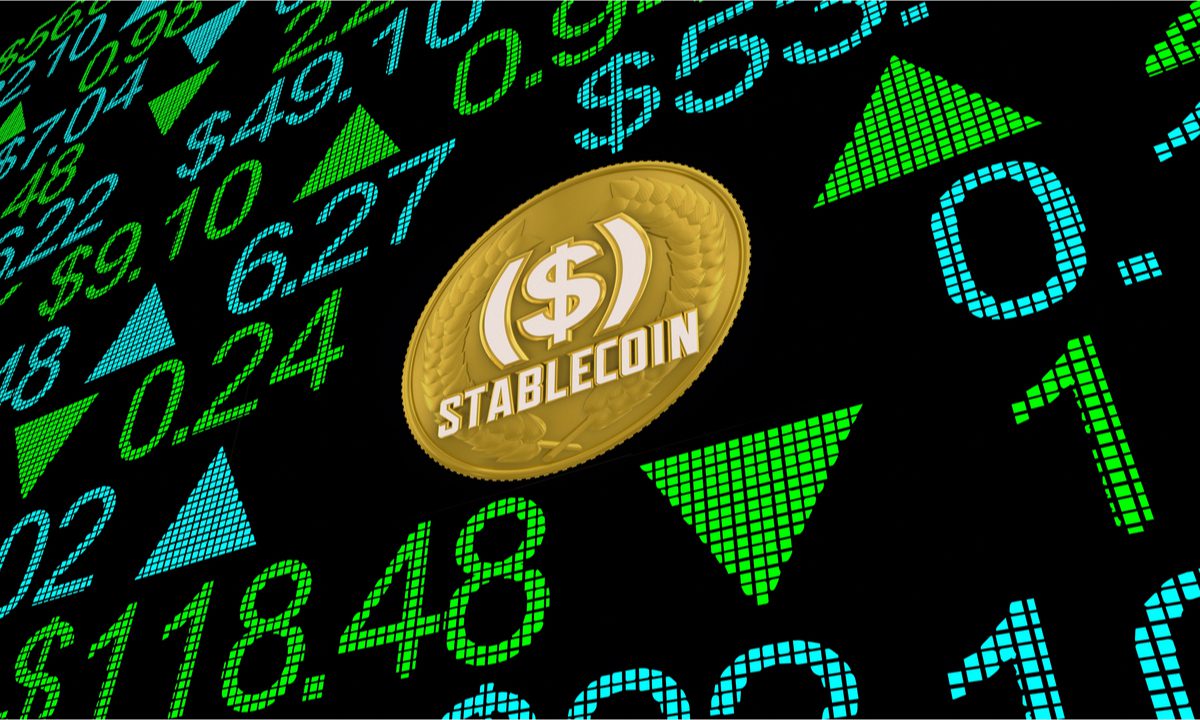Why Stablecoins Are Surging

There’s a strong case to be made that dollar-pegged stablecoins are the fastest growing part of the cryptocurrency market, with the top three having tripled from $50 billion to $150 billion in just the past 12 months.
The biggest is tether, or USDT, with a $79.5 billion market capitalization, up from $35 billion a year ago. Next is Circle’s USD Coin, or USDC. It is the No. 2 stablecoin with a market cap of $53.2 billion, up from $8.7 billion. No. 3 is the fastest growing of the stablecoins, Binance’s BUSD, with a market cap of $18.1 billion, up from $2.3 billion. The entire stablecoin market is worth about $180 billion.
They are certainly the most controversial part of the cryptocurrency market, with regulators and politicians around the world increasingly focused on their potential to endanger global financial stability and governments’ ability to protect their economies.
Read more: U.S. Treasury Eyes Probe of Stablecoins’ Financial Risk
Stablecoins maintain their peg with the dollar by holding a one-to-one reserve of cash and highly liquid investments that keeps their value on par with the fiat currency. Or at least, that’s the theory.
Why the Surge?
There are a number of factors behind the dramatic surge in the use of stablecoins over the past few years, most notably the soaring value of the cryptocurrency market as it has been embraced by both Wall Street and Main Street.
Far and away the biggest use of stablecoins is to facilitate the trading of cryptocurrencies like bitcoin, ether and thousands of other so-called alt coins. While you can trade bitcoin directly for ether on many exchanges, it is far harder to find direct markets for even the largest of the other cryptocurrencies. The simplest solution is to sell one cryptocurrency for a stablecoin and use that to buy another.
But an even bigger use is as a way to park funds while waiting for a buying opportunity. This is heavily used by the richest crypto traders, both old-school “whales” and newer institutional buyers with nine- or 10-figure budgets.
As stablecoins are largely issued as needed, the surging price of bitcoin and other cryptocurrencies has played a big part in this as well. Go back another year, to February 2020, and the market cap of stablecoins was $5.25 billion, but a bitcoin cost just $9,300. Simply put, as the size of the crypto industry soared past $1 trillion and then $2 trillion, more stablecoins were required.
An up-and-coming use is in decentralized finance (DeFi) lending platforms, which offer loans in stablecoins for crypto collateral.
See also: PYMNTS DeFi Series: What is Yield Farming and Liquidity Mining?
Beyond Trading
That said, stablecoins are on the verge of another, likely larger surge as their use moves beyond cryptocurrency exchanges.
As the use of cryptocurrencies as an actual currency grows — and the demand for Visa- and Mastercard-issued debit cards that allow holders to spend crypto directly at any merchants’ point of sale shows it is growing — stablecoins are a very useful way to make payments.
Last month, crypto payments processor BitPay CEO Stephen Pair told PYMNTS’ Karen Webster that stablecoins like USDT and USDC now account for 13% of the direct-to-merchant payments made using its services.
Also read: BitPay Sees Consumer Crypto Payments Growing Beyond Bitcoin
That use was what led to the outcry against Facebook’s cryptocurrency proposal Libra, later renamed Diem. While that effort collapsed in the face of outrage and threats from governments around the world — Diem was just sold to crypto-focused Silvergate Bank — concerned that widespread use of stablecoins could draw consumers away from national fiat currencies and the economic control they provide.
See: In Buying Diem’s Stablecoin, Silvergate Bank Makes Itself a Contender
A smaller stablecoin, Paxos’s Pax Dollar, with a market cap of just $945 million, could be poised to break out as Facebook’s Instagram platform just announced it plans to let users make payments with USDP — even across borders, which would provide another reason to bypass fiat currencies. As the vast majority of stablecoins are pegged to dollars, this could turn them into a global currency whose price is unrelated to other national currencies.
Which is exactly why Facebook’s Libra/Diem plan was so feared around the world, with the EU leading the way in not only threatening to ban it, but also mandate that any stablecoins used with the bloc be euro-backed.
Learn more: President’s Working Group: Stablecoin Risks Warrant Legislation
In the U.S., the Presidents’ Working Group on Financial Stability’s recent stablecoins recommended that only FDIC-insured banks be allowed to issue them. And stablecoin hearings in both the house and senate have had far more fireworks than any other segment of crypto regulation.
See: Powell, Yellen Clash Over Stablecoin Regulation at Senate Hearing
Untethered
What’s most interesting about the stablecoin market itself, is that tether, long the largest and most dominant stablecoin, is increasingly losing ground to USDC and BUSD.
USDC has grown more than 600% in the past year and BUSD about 790%, while USDT is only up 220%.
The competition is getting fiercer, in part because USDT-issuer Tether has had legal problems — since settled — about the size and nature of the basket of currency and currency-equivalents backing it.
See also: In Winning DeFi, Circle’s USDC Shows It Can Be the No. 1 Stablecoin
Still, USDT remains dominant in the crypto trading arena.
USDC and BUSD, on the other hand, are making inroads with DeFi investors and payments processors like BitPay. And that’s where the future is.
